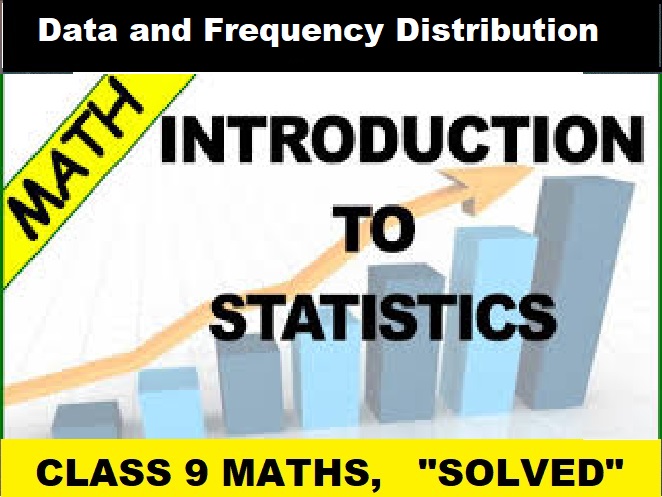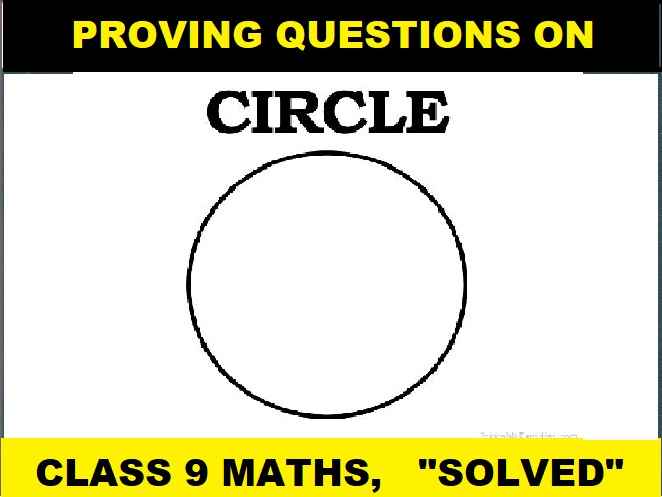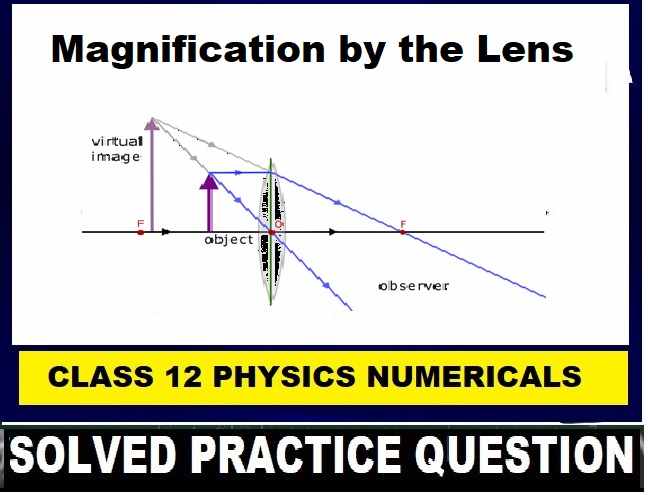Class-10 Goyal Brothers Elecromagnetic Waves and Spectrum ICSE Physics Solutions Ch-6 . We Provide Step by Step Answer of Exercise, MCQs, Questions of Exercise-1 Goyal Brothers Elecromagnetic Waves and Spectrum ICSE Class-10 . Visit official Website CISCE for detail information about ICSE Board Class-10 Physics.
Elecromagnetic Waves and Spectrum Class-10 Goyal Brothers ICSE Physics Solutions Ch-6
-: Select Topics :-
Exe-1 Class-10 Elecromagnetic Waves and Spectrum Goyal Brothers ICSE Physics Solutions Ch-6
Page-107,108
Question 1.
What is the range of wavelength of visible light?
Answer:
Range of wavelength of visible light: 4000 A° to 8000 A°.
Question 2.
What do you understand by the term colour ?
Answer:
Colour : “Is a sensation produced in the brain and is not some thing material.”
Or
“Is a sensation produced in the brain due to excitation of the retina, by an electromagnetic wave of some particular wave length.
Question 3.
(a) Define :
- monochromatic light,
- polychromatic light.
(b) Is white light polychromatic or monochromatic ? Explain your answer.
Answer:
(a) (i) Monochromatic light : “A light which consists of one colour (or one wave length) only is called monochromatic light)”
(ii) Polychromatic light : “A light which consists of a mixture of several colours (wave bands) is called polychromatic light”.
(b) White light is a polychromatic light and has all the seven wavebands present in it.
Question 4.
Define or explain the following terms :
- dispersion of light
- spectrum
Answer:
(i) Dispersion of light : “The phenomenon of splitting white light into its components (seven colours) when passed through a prisms is called dispersion.”
(ii) Spectrum : “The band of colours obtained on the screen when a polychromatic (white) light splits into seven colours is called spectrum.”
Question 5.
Draw a neat diagram for the dispersion of white light by a prism and label all the colours of the spectrum.
Answer:
Dispersion of white light by prism:

Question 6.
Is the spectrum obtained by an equilateral glass prism pure or impure ? Explain your answer.
Answer:
Spectrum obtained is impure as colours overlap each other.
Question 7.
Draw a diagram showing that white light can be dispersed and then recombined by using two similar equilateral prisms.
Answer:
Dispersion and recombination of white light:

Question 8.
(a) What is ultraviolet spectrum ? What is the range of its wavelength in A° ?
(b) State four important properties of ultraviolet rays.
(c) State four uses of ultraviolet rays.
Answer:
(a) Ultraviolet spectrum : “The region of spectrum which extends beyond the violet colour of visible spectrum is called ultraviolet spectrum.”
(b) Four properties of ultra violet :
- They are electromagnetic waves and are not effected by: Electric Or Magnetic fields.
- They obey the laws of refraction and reflection.
- They travel with velocity 3 × 105 km/sec
- “I’hey produce chemical effect in silver salts.
(c) Four uses of U.V. :
- U.V. arc used to detect adulteration in ghee because of its property of fluorescence.
- Used to sterilise surgical instruments and drinking water.
- U.v. absorbed by skin stimulates body to produce vitamin D, which is very good for growth of bones and teeth.
- U.V. are used to detect original diamonds from fake diamonds.
Question 9.
(a) What are infrared rays ? What is the range of wavelengths of infrared rays in A° ?
(b) State four important properties and four uses of infrared rays ?
Answer:
(a) Infrared rays : “The electromagnet radiations beyond redend of the visible spectrum are called infrared rays : Their range is 8000 A° to 107 A°.
(b) Four properties of infra red rays :
- l.R. rays are least scattered by fog, mist etc. as they have long wavelength.
- They can be detected by a thermopile or a thermometer with a blackend bulb, as they produce heating effect.
- They travel with vel. of light i.e. 3 × 108 ms-1
- They are electromagnetic wave and hence are not affected by electromagnetic fields.
Four uses of infra red rays :
- They are used to detect diseases in crops which are used to find any change in heat radiation pattern and help in early warning to save crops.
- Patients with swollen joints, muscles, etc. feel relieved when exposed to these radiations.
- These are used in night vision devices.
- They are used in surface to air missiles for tracking and destroying enemy planes.
Question 10.
Write the names of all the components of electromagnetic spectrum in the order of increasing frequency.
Answer:
Components of electromagnetic spectrum in order of increasing frequency :
Radio wave microwave infra-red visible ultra violet, X rays, Gama rays
→ 3 × 1o7 Hz 3 × 1011 HZ 7.5 × 1014 3.75 × 1014 – 3 × 1016 HZ 3 × 1019 HZ
Question 11.
What do you understand by the term “scattering of light”? Which colour of white light is scattered the least and why?
Answer:
Scattering : “When an incident light strikes a particle which has a diameter greater than the wavelength of incident light, then the incident light is absorbed by the particle and transmitted in all possible directions. This phenomenon is called scattering.”
Red colour of white light is scattered the least.
Question 12.
Explain the following :
(a) Why does the sun appear red during sunrise or sunset?
(b) Why does the sky appear blue on the earth, but black on the moon ?
(c) Why are orange or yellow lights used as fog lights in automobiles ?
(d) Why do the distant hills appear blue ?
(e) Why does the sky appear blue, instead of violet ?
Answer:
(a) Sun appears red during sun rise or sun set : Blue colour of short wave length scatters the most, while red light of long wave length scatters least (white-blue = red) red light reaches us and sun appears red

(b) Sky appears blue on earth but black on moon : Light from sun has to travel longer distance to reach us. Short wave length blue colours scatters more than red colour. Light reaching our eye from all directions is scattered blue, hence sky appears blue. Where as there is no atmosphere on moon, no scattering of light takes place and it appears black on moon.
(c) Red colour of longer wave length scatters least by air molecules of atmosphere and red light can be seen from farthest distance (without getting weak) hence are used as fog lights in automobiles.
(d) Distant hills appear : Blue because of scattering of blue light by water vapours present in air.
(e) As light passes through atmosphere indigo and blue both scatter because size of particles of present in air goon increasing and sky appears blue because blue light reaches us from particles scattering blue colour which are nearest to the eye.
Multiple Choice Questions-1
Elecromagnetic Waves and Spectrum Class-10 Goyal Brothers ICSE Physics Solutions
1. Visible light has electromagnetic waves between :
(a) 8000 A° to 6000 A°
(b) 8000 A to 1000 A°
(c) 8000 A° to 4000 A°
(d) 8000 A to 2000 A°
Answer:
(c) 8000 A° to 4000 A°
2. 1 Angstrom unit (A°) is equal to :
(a) 10-10 m
(b) 10-12 m
(c) 10-8 m
(d) 106 m
Answer:
(a) 10-10
3. The most visible colour of visible spectrum is :
(a) blue
(b) red
(c) green
(d) orange
Answer:
(b) red
4. The. band of seven colours formed, when white light passes through an equilateral prism is called :
(a) dispersion
(b) colour band
(c) spectrum
(d) none of these
Answer:
(c) spectrum
5. Violet, green, red and yellow are the four colours formed on a white screen when a polychromatic light is dispersed. The arrangement of colours in the decreasing order of wave lengths is :
(a) green, red, yellow and violet
(b) red, yellow, green and violet
(c) violet, green, yellow and red
(d) violet, green, red and yellow
Answer:
(b) red, yellow, green and violet
6. The angle of deviation is maximum for ……. when the dispersion of polychromatic light takes place
(a) red
(b) violet
(e) green
(d) blue
Answer:
(b)violet
7. Which is not a source of ultraviolet radiations ?
(a) Sun
(b) Arc lamp
(c) Electric heater
(d) Star
Answer:
(c) Electric heater
8. The electromagnetic radiation which are useful in night photography is:
(a) infrared rays
(b) ultraviolet rays
(e) visible light
(d) X-rays
Answer:
(a) infrared rays
9. The electromagnetic wave associated with high energy is:
(a) ultraviolet ray
(b) X-ray
(e) gamma ray
(d) infrared ray
Answer:
(c) gamma ray
10. During the Sunset the colour which scatters closest to the eye of observer is:
(a) yellow
(b) red
(c) blue
(d) violet
Answer:
(b) red
11. Infrared rays with very large wavelength are easily reflected by
(a) air
(b) glass
(c) carbon dioxide molecules
(d) both (b) and (c)
Answer:
(c) carbon dioxide molecules
12. X-rays are produced by
(a) oscillating circuits in special vacuum tubes
(b) excitation of outermost electronic shell of an atom
(c) excitation of inner electron of atom and is sudden annihilation of high energy free electrons.
(d) nucleus of an atom, by the destruction of high energy particle.
Answer:
(c) excitation of inner electron of atom and is sudden annihilation of high energy free electrons.
-: End of Elecromagnetic Waves and Spectrum : Goyal Brothers ICSE Physics Class-10 Solution :-
Return to — Goyal Brothers ICSE Physics Class-10
Thanks


